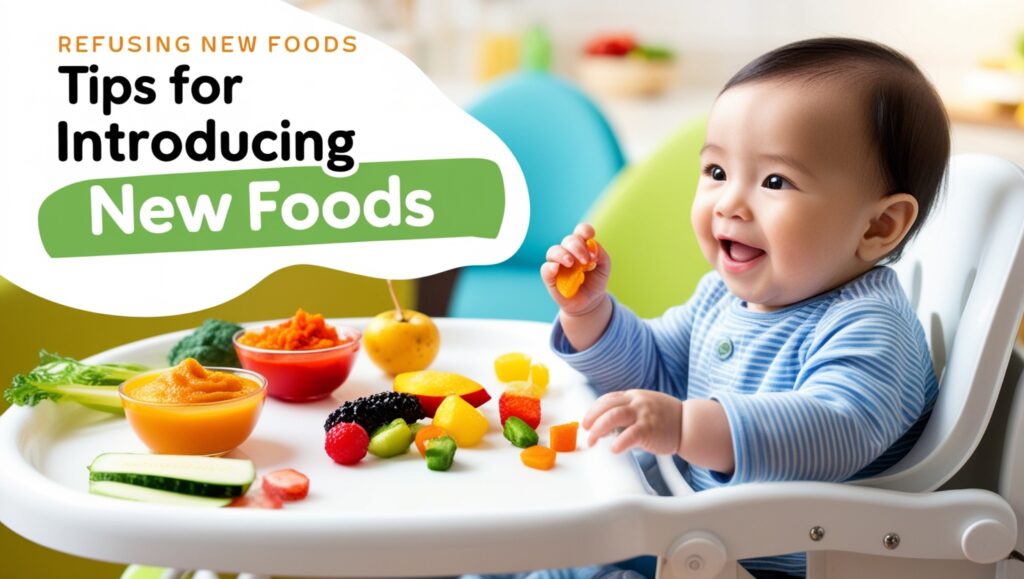Carrot Puree
- Why It’s Great: A great source of beta-carotene and essential nutrients for healthy eyesight.
- How to Make It: Peel and chop carrots, steam until tender, then blend into a smooth puree. Add water or breast milk for desired consistency.
Sweet Potato Puree
- Why It’s Great: Naturally sweet and rich in vitamin A, making it a favorite among babies.
- How to Make It: Bake or steam peeled sweet potatoes until soft, then blend until creamy.
Pear Puree
- Why It’s Great: Gentle on the tummy and naturally sweet, pears are perfect for digestion.
- How to Make It: Steam peeled and cored pears until soft, then puree into a smooth texture.
Green Pea Puree
- Why It’s Great: Packed with protein and essential vitamins like K and C, it’s a superfood for babies.
- How to Make It: Steam fresh or frozen peas and blend until smooth, adding a bit of water if needed.
Apple Puree
- Why It’s Great: A classic first food, apples are loaded with fiber and vitamin C.
- How to Make It: Peel, core, and steam apples until tender, then blend to a smooth puree.
Storage Tips for Purees: Keeping It Fresh
- Refrigerate: Store freshly prepared purees in airtight containers in the refrigerator for up to 3 days.
- Freeze: Use ice cube trays to portion and freeze purees. Once frozen, transfer cubes to a freezer bag and label them with the date. Purees can be stored in the freezer for up to 3 months.
- Defrost Safely: Thaw frozen purees in the refrigerator overnight or warm them in a bowl of hot water before serving.
The Role of Textures: Progressing from Smooth to Chunky
As your baby grows and becomes more comfortable with solids, gradually introduce texture to encourage chewing skills. Here’s a simple progression guide:
- 4–6 Months: Completely smooth purees.
- 6–8 Months: Slightly thicker purees with tiny, soft lumps.
- 8–10 Months: Chunky purees or soft mashed foods.
- 10–12 Months: Finger foods and soft solids like small pasta pieces or soft fruits.
Pro Tips for Homemade Purees
- Use Seasonal Ingredients: Seasonal fruits and vegetables are fresher, more flavorful, and budget-friendly.
- Avoid Store-Bought Additives: Homemade purees eliminate the need for preservatives and added sugars found in many commercial baby foods.
- Experiment with Temperatures: Serve purees at different temperatures (slightly warm or cool) to see your baby’s preference.
When and How to Serve Water with Purees
While breast milk or formula remains your baby’s primary source of hydration, a small amount of water (1–2 ounces) can be introduced with meals to help them learn to drink from a cup.
Signs Your Baby Is Ready for More Texture
- They begin moving food around their mouth more effectively.
- They show interest in foods you’re eating.
- They can pick up small pieces of food using their thumb and forefinger (pincer grasp).
Common Questions About Starting Purees
Q: Can I use spices or herbs in purees?
A: For the first few months of introducing solids, keep it simple with single ingredients. Once your baby is comfortable, you can add mild spices like cinnamon or herbs like basil to enhance flavor.
Q: What if my baby spits out the food?
A: This is normal! Babies often take time to adjust to new textures and tastes. Be patient and try again in a few days.
Q: How do I know when to increase portion sizes?
A: Follow your baby’s cues. If they eagerly finish the portion and show interest in more, gradually increase the amount.
Baby-Friendly Combinations to Try Later
Once your baby has sampled a variety of single-ingredient purees, you can begin to combine them for delicious flavor pairings:
- Carrot + Pear: Sweet and earthy, a perfect match.
- Avocado + Banana: Creamy and nutrient-packed.
- Sweet Potato + Green Beans: A savory combination for a balanced meal.
- Peach + Oatmeal: A naturally sweet breakfast option.
Fun Serving Ideas
- Rainbow Purees: Serve different colored purees side by side for visual stimulation.
- DIY Food Art: Use purees to create fun patterns or designs on the plate.
- Interactive Feeding: Let your baby hold a spoon to explore food textures independently.
Overcoming Feeding Challenges
If your baby shows disinterest in purees:
- Offer food when they’re alert and slightly hungry, but not too hungry.
- Reduce distractions during mealtime.
- Try serving the puree with a silicone-tipped spoon that’s soft on gums.
- Make it fun by smiling and encouraging them during feeding.
Safety Reminders for First Foods
- Always check the temperature before serving to avoid burns.
- Avoid honey, cow’s milk, and choking hazards like whole grapes or nuts for babies under 1 year.
- Never leave your baby unattended while eating.
Final Thoughts
Starting with single-ingredient purees is a rewarding journey for both you and your baby. By introducing these wholesome, homemade meals, you’re setting a strong foundation for a lifetime of healthy eating habits. Enjoy every spoonful of this exciting new chapter!

